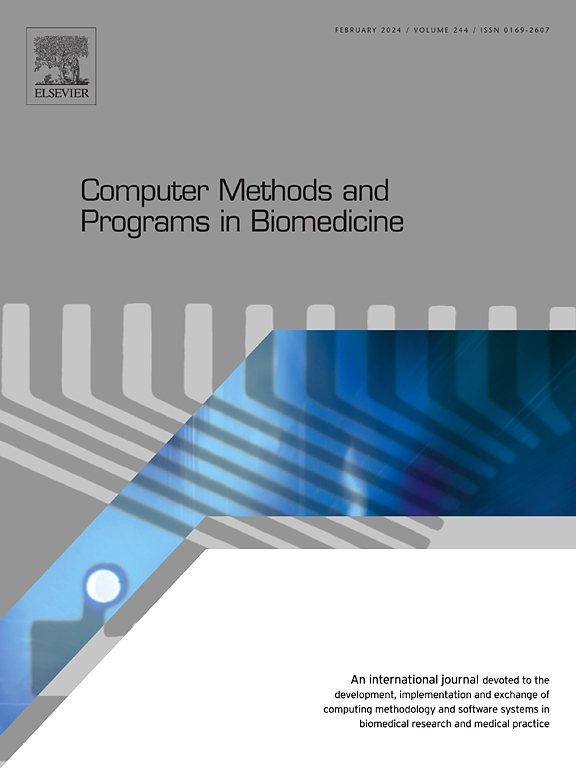A novel lightweight deep learning based approaches for the automatic diagnosis of gastrointestinal disease using image processing and knowledge distillation techniques
IF 4.9
2区 医学
Q1 COMPUTER SCIENCE, INTERDISCIPLINARY APPLICATIONS
引用次数: 0
Abstract
Background
Gastrointestinal (GI) diseases pose significant challenges for healthcare systems, largely due to the complexities involved in their detection and treatment. Despite the advancements in deep neural networks, their high computational demands hinder their practical use in clinical environments.
Objective
This study aims to address the computational inefficiencies of deep neural networks by proposing a lightweight model that integrates model compression techniques, ConvLSTM layers, and ConvNext Blocks, all optimized through Knowledge Distillation (KD).
Methods
A dataset of 6000 endoscopic images of various GI diseases was utilized. Advanced image preprocessing techniques, including adaptive noise reduction and image detail enhancement, were employed to improve accuracy and interpretability. The model's performance was assessed in terms of accuracy, computational cost, and disk space usage.
Results
The proposed lightweight model achieved an exceptional overall accuracy of 99.38 %. It operates efficiently with a computational cost of 0.61 GFLOPs and occupies only 3.09 MB of disk space. Additionally, Grad-CAM visualizations demonstrated enhanced model saliency and interpretability, offering insights into the decision-making process of the model post-KD.
Conclusion
The proposed model represents a significant advancement in the diagnosis of GI diseases. It provides a cost-effective and efficient alternative to traditional deep neural network methods, overcoming their computational limitations and contributing valuable insights for improved clinical application.
基于图像处理和知识蒸馏技术的胃肠疾病自动诊断新方法。
背景:胃肠道(GI)疾病给医疗保健系统带来了巨大挑战,这主要是由于胃肠道疾病的检测和治疗非常复杂。尽管深度神经网络取得了进步,但其高计算需求阻碍了其在临床环境中的实际应用:本研究旨在通过提出一种轻量级模型来解决深度神经网络计算效率低下的问题,该模型集成了模型压缩技术、ConvLSTM 层和 ConvNext 块,所有这些都通过知识蒸馏(KD)进行了优化:方法:利用一个包含 6000 张各种消化道疾病内窥镜图像的数据集。采用了先进的图像预处理技术,包括自适应降噪和图像细节增强,以提高准确性和可解释性。从准确性、计算成本和磁盘空间使用等方面对模型的性能进行了评估:结果:所提出的轻量级模型的总体准确率高达 99.38%。该模型运行高效,计算成本为 0.61 GFLOPs,仅占用 3.09 MB 磁盘空间。此外,Grad-CAM 可视化展示了增强的模型显著性和可解释性,为模型的后 KD 决策过程提供了洞察力:所提出的模型代表了消化道疾病诊断领域的重大进步。它为传统的深度神经网络方法提供了一种经济高效的替代方法,克服了传统方法的计算局限性,为改善临床应用提供了宝贵的见解。
本文章由计算机程序翻译,如有差异,请以英文原文为准。
求助全文
约1分钟内获得全文
求助全文
来源期刊

Computer methods and programs in biomedicine
工程技术-工程:生物医学
CiteScore
12.30
自引率
6.60%
发文量
601
审稿时长
135 days
期刊介绍:
To encourage the development of formal computing methods, and their application in biomedical research and medical practice, by illustration of fundamental principles in biomedical informatics research; to stimulate basic research into application software design; to report the state of research of biomedical information processing projects; to report new computer methodologies applied in biomedical areas; the eventual distribution of demonstrable software to avoid duplication of effort; to provide a forum for discussion and improvement of existing software; to optimize contact between national organizations and regional user groups by promoting an international exchange of information on formal methods, standards and software in biomedicine.
Computer Methods and Programs in Biomedicine covers computing methodology and software systems derived from computing science for implementation in all aspects of biomedical research and medical practice. It is designed to serve: biochemists; biologists; geneticists; immunologists; neuroscientists; pharmacologists; toxicologists; clinicians; epidemiologists; psychiatrists; psychologists; cardiologists; chemists; (radio)physicists; computer scientists; programmers and systems analysts; biomedical, clinical, electrical and other engineers; teachers of medical informatics and users of educational software.
 求助内容:
求助内容: 应助结果提醒方式:
应助结果提醒方式:


